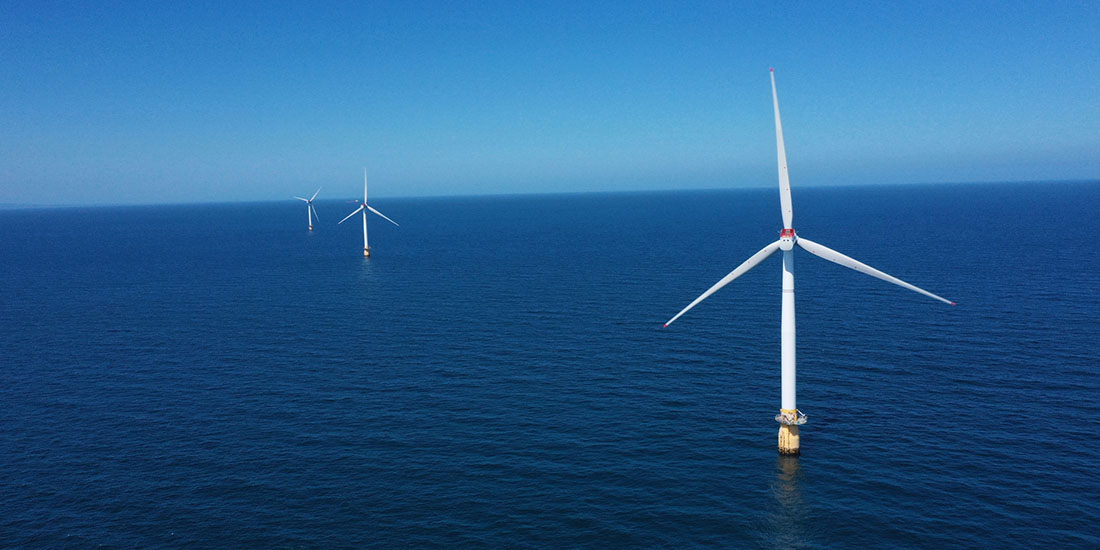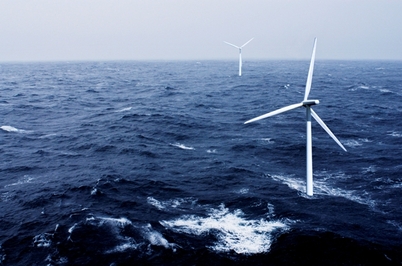Offshore wind power gains international momentum
Norway needs to take proactive steps to retain its lead in developing floating offshore wind, says NTNU professor.
“We can’t just wait for the technology to improve. We need to build experience and not just watch others do it first. If we’re going to stay in the driver’s seat, we have to develop offshore wind on a large scale. It’ll be expensive at the start, but in the long term the costs will decrease,” says Erin Bachynski-Polić, a professor at NTNU’s Department of Marine Technology (IMT).
Norway has been a leader in offshore wind technology, but now other countries such as France, Japan and the USA are catching up, according to the researcher.
Bachynski-Polić is one of NTNU’s foremost experts on wind turbine construction. She works primarily with how wind turbines behave in waves, currents and wind conditions – in other words, how wind turbines can produce energy efficiently while not being damaged by wear and tear or extreme external conditions.
Large-scale investment by the government
In February, the Norwegian government launched a “large-scale investment in offshore wind.” Offshore wind turbines were to be set up in the areas of Sørlige Nordsjø II and Utsira Nord, which together would be able to produce 1.5 gigawatts at full capacity.
The signals coming from several quarters were that this was not nearly ambitious enough.
In May, the government ramped up the ambition level and launched a “substantial investment in offshore wind” of 30 gigawatts. They declared that 1500 offshore wind turbines would cover an area of approximately one percent of Norwegian sea areas and be put into production by 2040.
Thirty gigawatts roughly correspond to the energy that Norway uses per year as of today.
- You might also like: Eavesdropping on whales in the high Arctic
No wind turbines that big – yet
The government called the offshore wind investment a “major new industrial boost for Norway” and compared it to the oil development that started in 1969.
Norway’s Minister of Trade and Industry Jan Christian Vestre said during the press conference about this large-scale venture that offshore wind could become an industrial dream come true, and offer a green-friendly technology to shift the country’s industries away from petroleum.
“The largest turbines today are capable of generating up to 15 megawatts at full capacity. When the government says 1500 wind turbines that will produce a total of 30 gigawatts, they’re basing their figures on each individual turbine being able to produce 20 megawatts,” says Bachynski-Polić.
Currently, there are no wind turbines this big yet.
Economic viability depends on design improvements
“One challenge in creating wind turbines that can produce up to 20 megawatts is that the blades get really heavy. We need to adapt the design so that aerodynamic forces, and not the turbine’s self-weight, are dominant,” says Bachynski-Polić.
Several challenges remain to make floating offshore wind and structures viable.
“We can see that creating floating offshore wind farms, like Hywind Scotland, is possible, but we’ll have to reduce the costs of developing large wind farms to be economically profitable,” says the professor.
Currently, the platform and the turbine structure are constructed separately. Different suppliers are responsible for different parts, which does not optimize the overall construction of the wind turbine.
“Designing the turbine and the platform together will be one of the most important things to put into place in order to reduce costs and build the structures more efficiently,” Bachynski-Polić says.
Offshore wind turbine facts
- There are two types of offshore wind turbines: floating and fixed-bottom.
- The highest wind turbine to date rises 260 metres above the water’s surface. It is anchored and in the process of being installed on Dogger Bank A, 130 kilometres off the north-east coast of England.
- The four main types of wind turbine designs for floating wind are: spar, semi-submersible, TLP (Tension Leg Platform) and barge type. These designs are illustrated later in the article.
Smaller size – less steel
“Building smaller turbines that work well at lower wind speeds can also be an advantage, rather than very large turbines that work best at higher wind speeds,” she says.
Smaller turbines require a different blade design and construction design in general.
“Another question is how we can reduce the size and the amount of steel to make the turbines more flexible and dynamic. For that we need to have good control over the movements, a greater ability to change the angle of the turbine’s blades and to adjust the resistance from the generator in the turbine to stabilize the construction.”
At NTNU’s Department of Marine Technology, research includes creating accurate algorithms and developing good measurement data.
- You might also like: The art of preventing climate collapse
Floating offshore generates more energy
Floating offshore wind is super interesting because it produces more energy than fixed-bottom or land-based turbines.
“Wind turbines on land produce on average about 25 to 30 per cent of their maximum capacity. Offshore fixed-bottom wind turbines have between a 45 and 50 per cent utilization rate, while floating offshore wind approaches 60 per cent for long periods. The wind simply blows more and harder at sea,” says Bachynski-Polić.
The first floating offshore wind turbine, the Hywind demo, was built and assembled outside Stord municipality in Norway’s Vestland county already in 2009. Norway constructed the first multimegawatt turbine. Compared to today’s turbines, the Hywind demo was small, with a production capacity of 2.3 megawatts.
Hywind Scotland was launched in 2017 and is one of several demo parks in the world. These turbines produce a maximum of 8 megawatts and had an average utilization rate of 57 per cent from April 2019 to March 2020.
Norwegian industry has been the first to create small offshore wind farms. Now the development of large farms such as Utsira Nord and Sørlige Nordsjø, both in the North Sea, remains.
The design and construction of these turbines is a multidisciplinary task. Marine engineering, aerodynamics, electrical engineering, regulation engineering and geoengineering are all needed to create these giant structures and make them function optimally under various conditions.
The cost-cutting challenge
Some of the keys to succeeding with this venture will be to create designs that make offshore wind more economically profitable, to train enough candidates to work with offshore wind, to restructure parts of the oil industry to establish and operate these offshore wind fields, as well as to research adequate turbine solutions.
Floating wind won’t achieve competitive prices if the safety margins are too large.
“We haven’t tested the simulation tools enough for them to capture all the physical effects. To create something completely new, we have to ensure that the algorithms capture the physical reality to the greatest extent possible. Further development will require better comparisons with physical experiments,” says Bachynski-Polić.
A lot of model testing and full-scale testing will be needed to create accurate simulation models. The costs will also be reduced when they can be implemented.
“We need more accurate simulation tools to cut costs. Floating wind won’t achieve competitive prices if the safety margins are too large,” says Bachynski-Polić.
Since floating wind turbines are unstaffed and have little risk of pollution, the risk is primarily economic.
“That’s why lowering the safety margins in order to reduce costs is key. And then we have to be sure of the design,” she says.
As of today, a lot of data is missing.
- You might also like: An ‘unknown’ ecosystem that is good news for the climate
When will things get serious?
According to Bachynski-Polić, seriously starting to develop offshore wind farms in Norwegian waters, such as at Utsira Nord, may take five or six years. However, progress could happen faster if we can speed up various parts of the process, she says.
Creating efficient floating platforms would allow them to be standardized and used in wind farms all over the world, in contrast to fixed offshore wind which requires local adaptations, since the seabed conditions vary within these farms.
“Offshore wind is part of the solution in future renewable energy production, but not the whole answer. Floating offshore wind will be a more efficient and stable source of energy than wind turbines on land and fixed-bottom offshore wind turbines,” says Bachynski-Polić.
The four floating wind turbine types explained

Illustration: Erin Bachynski-Polić
SPAR floaters are constructed to be long and thin and are stabilized by heavy ballast far below. They require relatively deep water – both where they are assembled and set up (preferably in a fjord). Hywind Scotland employs a spar design.
SEMI-SUBMERSIBLE wind turbines gain stability from the widely spaced pillars. They do not require as much water depth as the spar and are relatively easy to install. However, they are more susceptible to stress from waves. WindFloat is an example of this design.
TENSION LEG PLATFORMS (TLP) are stabilized by their tight vertical tension legs. They have relatively small movements, but are difficult and expensive to install due to the high tension in the tie rods and expensive anchors.
BARGE type structures gain stability from a large waterplane area. They are relatively cheap to make, and can be deployed in very shallow water, but are susceptible to heavy loads from waves. Sevan has a concept that can be considered a barge type.






